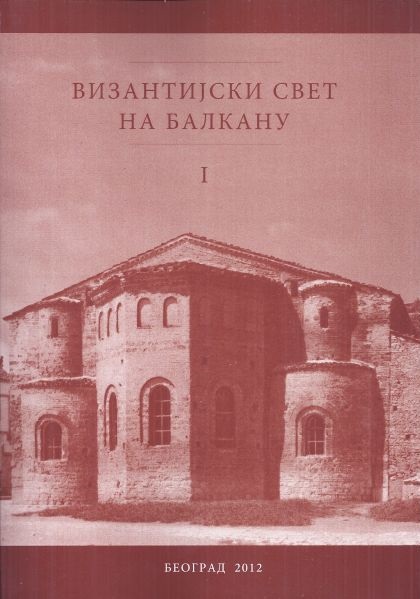Култ свтог Јоаникија Девичког
The Cult of Saint Ioannikios of Devič
Author(s): Danica Popović
Subject(s): Cultural history, 15th Century, Eastern Orthodoxy
Published by: Vizantološki institut SANU
Summary/Abstract: Although veneration of holy hermits was a well-known practice in medieval Serbia, hermits are few among the Serbian saints. The most prominent place belongs to Saint Peter of Koriša (late 12th century), whose cult was programmatically created in emulation of the best models of the hagiographic genre. There is only one more fully and consistently shaped cult of a local hermit, St. Ioannikios of Devič. It is attested in the 15th century, the last period of Serbia’s independence prior to the final Ottoman conquest.
This saintly cult emerged in the reign of Despot Djuradj Brankovi} (1427–1456), when eremitism saw a strong expansion. It originated in the area of Kosovo and Metohija, where anchoritism had deep roots and well-developed forms. The historical figure of St Ioannikios is difficult to discern through later layers of legend. Our main source is the saint’s Service with a short Life, preserved as an 18th-century transcript (Serbian Academy of Sciences and Arts, 71). The Life tells us that he was a native of Metohija who began his ascetic path at Crna Reka (Ibarski Kolašin), and then moved to the Desert of Devič (Kosovska Drenica). The Life, built upon standard, time-hallowed topoi of eremitic hagiography specifying all phases of the eremitic endeavour, accords an important place to the motif of the encounter between ruler and hermit — Ioannikios and Despot Djuradj, and their joint ktetorship of the Devič monastery church dedicated to the Dormition of the Virgin. This piece of information documents the practice, characteristic of the late medieval Serbian environment, of joint patronage of temporal rulers and their spiritual mentors, distinguished hesychast abbas. An integral part of the practice was the holy hermit’s burial in the church, which was also the case with Ioannikios. The holy founder’s grave was central to the status of the monastery as a source of miraculous cures and a focus for pilgrimage.
The first written reference to the church of the Dormition of the Virgin at Devič can be found in the 1455 Ottoman tax register for the realm of the Brankovi}s. As the present-day structure is the result of repeated demolitions, alterations and additions over the centuries, its original appearance is difficult to reconstruct, even more so as the monastery suffered heavy damage even in the 20th century — in 1915, 1941 and 2004. The sacred focus of the monastery complex is the small room with the tomb of St Ioannikios, abutting to the eastern wall of the church. Above the tomb, the depiction of the saint’s death is encircled with an inscription of 1578, which, apart from identifying the buried person, informs about the renovation of the shrine through the effort of hegoumenos Pachomios and hieromonk Longinos. A relatively large number of surviving notes made in manuscripts from the late 16th century until the end of the 18th attest to the reverence that Devič enjoyed as the keeper of the saint’s holy relics.
The Service being highly important to understanding the nature and function of the cult of St Ioannikios of Devič, the paper offers detailed considerations of the carefully selected topoi describing stages in the hermit’s ascetic endeavour, his saintly attributes and the properties of his relics. It also analyzes the verses relevant to the notions of desert and mountain as anchoritic abodes, defined as sacred spaces where the practice of ascetic discipline leads to the mortification of passions and union with God. The Service is a major source for understanding the theological notions and spiritual aspirations of its times. One of the central topics addressed by the paper is the distinctly hesychast character of the Service, hitherto simply noted by scholars. Among the recognizable hesychast elements are hesychia, joy-bearing tears, mystical visions and the radiance of the light from within. A very important element of the Service is the verses programmatically illustrating the Orthodox notion of the Holy Trinity. As a rule expounded polemically in relation to the Western Trinitarian notions, it constitutes an essential feature of hesychast theology in the late middle ages.
Book: Византијски свет на Балкану I-II
- Page Range: 607-623
- Page Count: 17
- Publication Year: 2012
- Language: Serbian
- Content File-PDF

